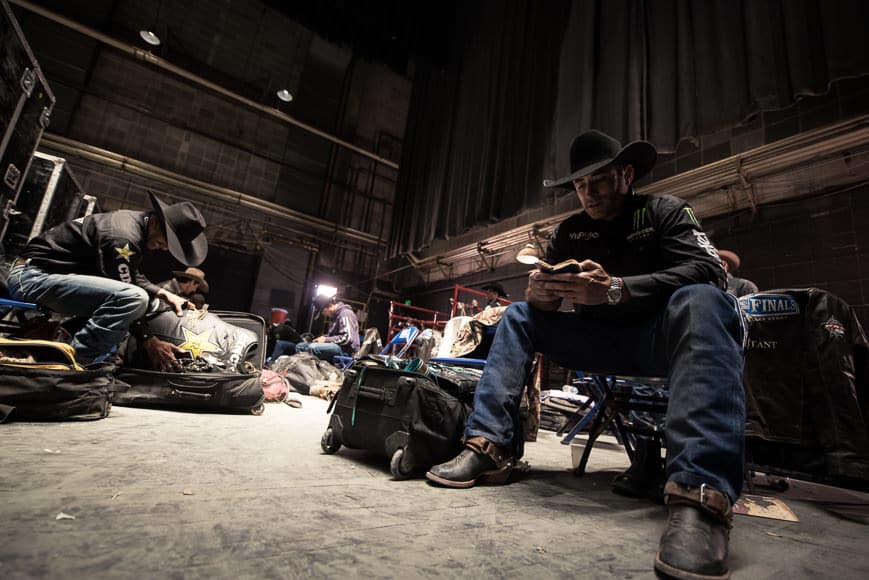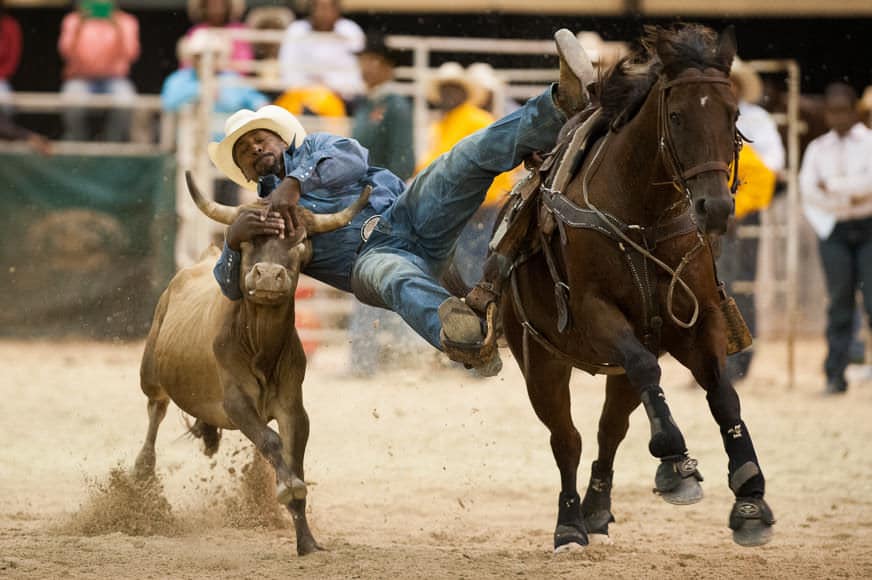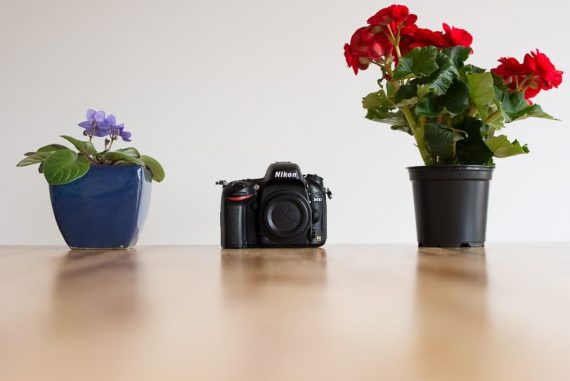







Christopher Thompson
Sports | Last Updated: April 4, 2024
Howdy! My name is Chris but most people know me as Click. If you told me when I graduated with my bachelors in Graphic Design that six years later I would be photographing rodeo I would not only laugh in your face but I’d be extremely curious as to how I got there.
Being a photographer was truly what I was created to do but if I knew being a cowboy was in the cards I would have started a lot sooner. I first started shooting portraits and concerts and then transitioned into shooting sports. I commonly preferred extreme sports to traditional ones, so skateboarding, bmx, and paintball led the way before I found rodeo. The more dangerous the sport the better!
As you can imagine, rodeo is probably one of the least equipment friendly environments photographers can immerse themselves in. So one of the most important qualities I look for in my gear is durability.
Some of my taglines on this topic include “It doesn’t have to be pretty, it just has to work” and “If nothing’s broke your not doing it right.” One weekend of bad weather can be rough on anyone’s kit so for my gear to last years it has to be tough.
One of the unique things about my style is that I shoot one of fastest and probably the most unpredictable sports on the planet slowly. That’s one picture at a time, every time.
Successful rodeo photography requires a heavy understanding of body motion, both in humans and animals. Each rider, horse, bull, and bullfighter moves differently and by understanding how his or her body moves you can anticipate action rather than react to it.
In my bags:
Bodies
Nikon D800: This is my primary body that I use to shoot the majority of my night events when I use flash. The resolution on this camera is simply incredible and when combined with flash turns any rodeo arena into my own studio.
Nikon D3: The D3 is often my secondary body but commonly it serves as my jack-of-all-trades camera. Its low light capabilities provide me some extra flexibility when I can’t use flash but also if I need the faster frame rate this is the go to. I also commonly pair this with my larger glass rather than the Nikon D800
because prefer the ergonomics of the D3
to the D800
with a vertical grip.
Lenses
Nikon 70-200mm f/2.8: This is my rodeo workhorse lens and can be used for 70-80% of my work. It’s fast, sharp and the focal length is perfect if I need to get close but not too close. I spend 95% of my time shooting inside the arena so when my subject fills the frame at 200mm that’s my indicator that it’s time to move.
Nikon 24-70mm f/2.8: Originally this was my workhorse when I shot concerts. This lens is now my all around lens for when I’m shooting portraits or covering behind-the-scenes action before, during and after the events.
Nikon 14-24mm f/2.8: I don’t think I’ve ever taken a bad picture with lens. Even the blurry ones. This lens just makes your pictures look better. It focuses super fast, it’s sharp and it really lets you see the world differently.
Nikon 10.5mm f/2.8 fisheye: This is a DX lens that I use with my retired Nikon D300
when I’m experimenting and trying new shots. I also use it on my Full Frame bodies occasionally after I saw the success Scott Kelby has had with it in the past.
Nikon 85mm f1/4: I love this for portraits but when I’m walking around at an indoor or night event and I want different look the Nikon 85mm f/1.4
gets the call. The f/1.4 can be hit or miss for rodeo but when you nail the shot this lens really makes your subjects jump out at you.
Nikon 50mm f/1.8D: In my opinion this is the lens I think every photographer should have or have a version of. For the price you really can’t beat it. I use the old Nikon 1.8D version, which is sharp and bulletproof.
Nikon 300mm f/2.8 VR: Often used side-by-side with the Nikon 70-200mm f/2.8
if I need a little more reach and I don’t want to use a teleconverter or if just want something different compositionally. I don’t typecast any of my lenses for one specific thing so I’ll use my Nikon 300mm f/2.8 VR
as a portrait lens or shoot details with it. It’s sharp, focuses really close for a big lens and is still light enough to handhold all day.
Nikon 200-400mm f/4 VR: This is my most recent lens addition and shares some of the role of my 300mm. Though you lose some light with the f/4 you gain flexibility with the zoom. This lens is great for any daytime events like barrel racing or roping that cover a lot of physical ground in the arena. I can handhold this one but I’m not as strong as Moose Peterson so I generally carry this around with a monopod.
Nikon TC-14 II (1.4x) teleconverter AF-S: This is a great little tool to have in your bag when you’re shooting with long lenses. It doesn’t hurt your image quality but gives you the added focal reach. It’s also smaller than my 50mm lens so I can save weight and toss it in my pocket.
Flash
Alien Bees B400 from Paul C. Buff (4-8): The AlienBees B400 is a small strobe that packs a punch and provides a great quality of light. I chose these strobes because they’re small, reliable and don’t cost a fortune. Of course, there are better lights out there with more power and produce better light but I’ve put these strobes through the wringer and they never stop. By far the best equipment addition/upgrade in my entire kit.
Vagabond Mini Lithium Battery from Paul C. Buff: This is my mobile power source for my strobes. You can power two strobes off this pack but I dedicate one pack per light. This way I can confidently shoot two events without having the charge them. Having these allows me to keep working regardless of the limitations of the venue. Many outdoor events don’t have many power sources let alone enough for the photographers to use.
Pocket Wizard Plus III: Pocket Wizards are really the standard for remote flash synchronization and I have them on all my strobes. They also work really well with remote cameras, which is great when you want to put a camera somewhere you can’t be. I generally only use basic channels but having the ability to control lights in groups is really helpful for events that take place on different ends of the arena.
Bags
ThinkTank Airport Security V2.0
ThinkTank Airport International
Lowepro Flipside 400AW
All in all my kit took me about 5 years to put together but each piece functions to provide me flexibility, adaptability, and most important creativity.

Check out these 8 essential tools to help you succeed as a professional photographer.
Includes limited-time discounts.












